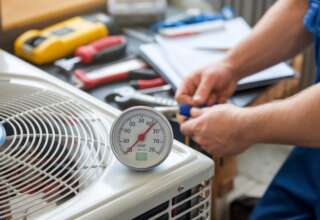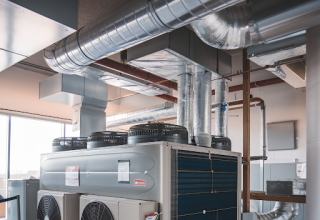The majority of any building when it is being constructed needs to include a space or spaces for water heaters either on every floor or one commercial unit for the whole building. This is a fundamental aspect always included in building plans. For those who are not as into household gadgets as we are, a water tank is what provides you with that nice hot shower in the mornings before you go to work or the nice cool shower in the summer evenings when it’s too hot outside.
These are possibly the most popular options for any heating any homes or commercial buildings that require hot water. They come in different shapes and sizes and also can be produced as either an electric or gas option. The choice will depend on the size of the household or the number of people that will be using the facilities. They can be either 20 gallons and go up to about 200 gallons typically.
Energy-Efficient Options
Besides the above options, one can also choose to go with what’s called an ‘on-demand’ water heater. These, unlike the conventional liquid tanks, do not require a tank to hold anything. These are well known for being convenient and energy-efficient due to the unit only heating the liquid as and when needed instead of being on the entire time, throughout the day.
They are smaller than the typical tanks and each one is installed in the individual shower units. So, if a building has more than one bathroom or shower, it can easily be installed in each one. In terms of costs, they may be slightly more expensive than conventional heaters but the costs you will be saving on your electricity bill will far outweigh the costs of the on-demand water heaters. Find out further information about this type of device on an online source here.
How Does It Work?
Sometimes when you are on holiday or booked into a self-catering apartment, you will find this unit installed in the shower and attached to the shower hose. The tank-less water heater works in a very simple and efficient way. Once the device is turned on, the water, which is still cold, travels through the pipe of the shower hose, and into the unit. Depending on whether it has an electric element or a gas burner, the water geta heated up using one of the two. In this way, it is no different from the conventional one because this too delivers hot water as and when you need it, the only difference is the electricity that you are wasting keeping it hot in a tank, will be eliminated from your expense.
The rate at which the device is heated and exists the hose is typically between 2 to 5 gallons per minute, equivalent to between 7 and 16 liters.
Things to Consider When Buying A Water Heater
When thinking of buying a new water tank or perhaps you want to replace your old one with a new energy-efficient tankless on-demand heater, there are a few things to consider first. There’s no going back once the unit has been installed in your house.
There are several different types of heaters ranging from your conventional one to a solar heater, heat pump heaters to name a few, and further information can be found on online sources such as this http://www.waterheatersonly.ca. One can easily do a search either online or get a recommendation from a neighbor or friend regarding what they use and if it works well. One such example is this online source of information
Size-
It is an important factor to think about. Ask your self if you have enough room to install any one of the tanks. If you’re using the tankless ones, your shower should at least have enough space to install it either inside or outside but within reach of the user. Don’t forget to put down the total number of units you will need as well. Factors weighing in on this will be the usage requirements and the number of people living in the household. If it is just for showering and shaving, then you may need a slightly smaller one compared to if you have a bigger house with many family members and young adults or working people plus appliances such as a dishwasher or a washing machine.
Costs-
It will be the first thing to look at. When thinking about how much to put aside for a decent one, try considering how much your current electricity bill versus how much you will be saving with an energy-efficient option.
Point to note when thinking about this is to check the EF or energy factor of the unit on sale. This is the number that is a result of liquid produced versus the amount of fuel consumed over a typical day. The higher the energy rating of the appliance, the better and more fuel-efficient it will be. We would also like to add that the type of fuel being used will also affect the costs.
There are also some quick and easy ways to save further costs in the house, even after installing one of the on-demand components such as fixing leaking pipes or faucets, replacing your other house-hold appliances like dishwashers and washing machines with energy-saving ones.
When looking for something as important as this it is essential to get a few different quotes from supplies and ask around for recommendations or references from people you know, you will guarantee the good ones will have good reviews from purchasers, on their website as well.












